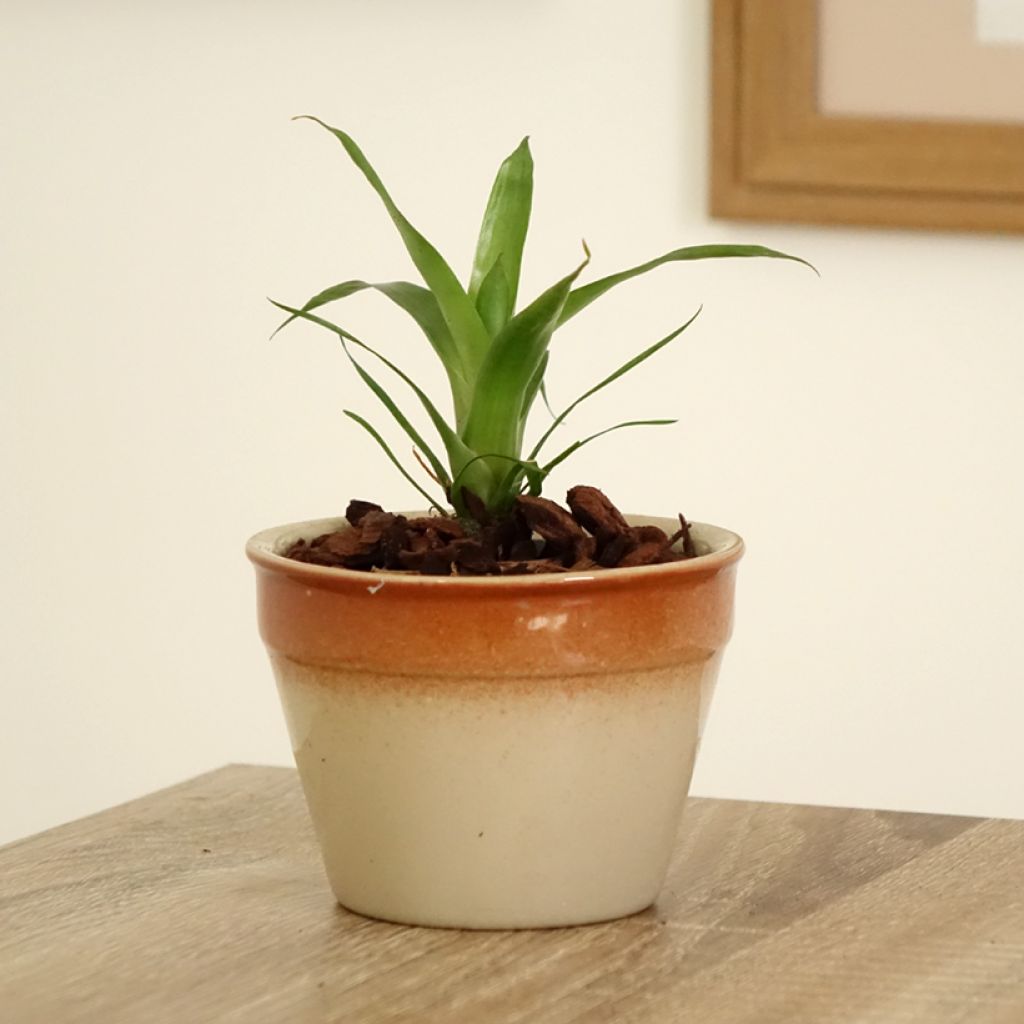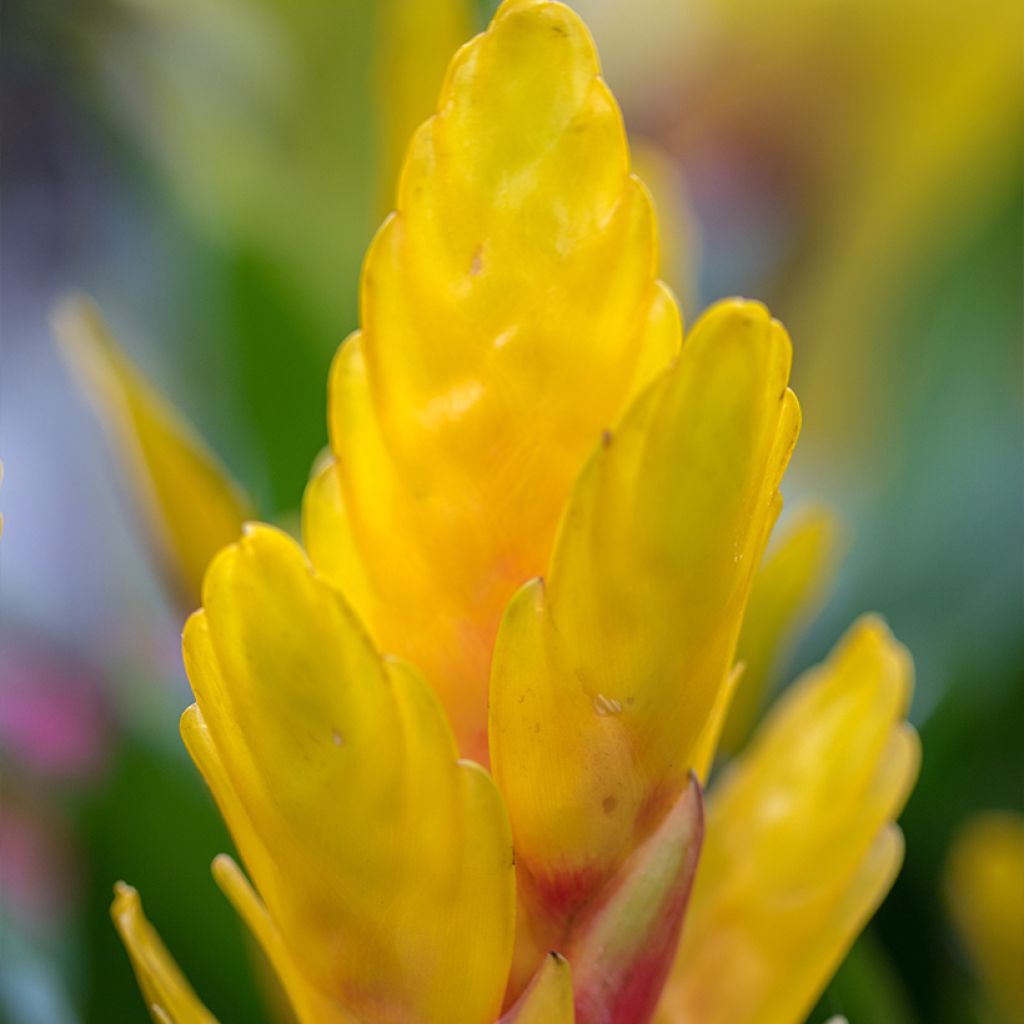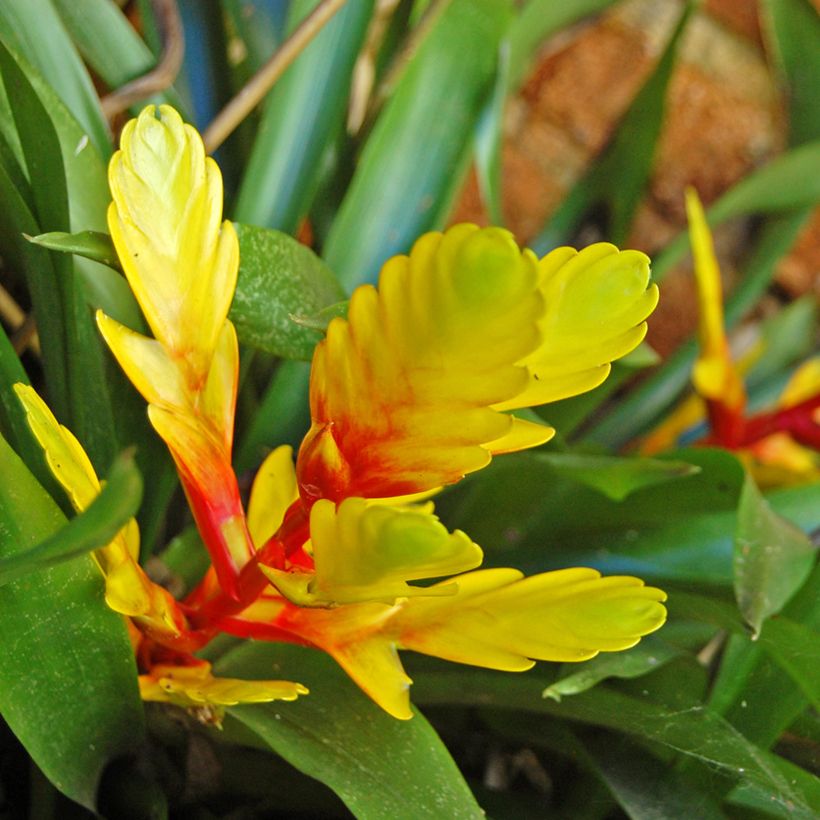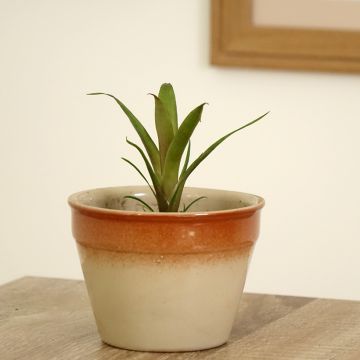

Vriesea Delphinius - Flaming sword plant


Vriesea Delphinius - Flaming sword plant
Vriesea Delphinius - Flaming sword plant
Vriesea carinata Delphinus
Flaming sword plant
This item cannot be shipped to the selected country
Delivery charge from 6,90 €
More information
Shipping country:
-
-
-
-
-
-
-
-
-
-
-
-
-
-
-
-
-
-
-
-
-
-
-
-
-
-
-
-
-
-
-
-
Schedule delivery date,
and select date in basket
This plant carries a 30 days recovery warranty
More information
We guarantee the quality of our plants for a full growing cycle, and will replace at our expense any plant that fails to recover under normal climatic and planting conditions.
From 7,90 € for pickup delivery and 6,90 € for home delivery
Express home delivery from 8,90 €.
Description
Vriesea 'Delphinius' is a small, but very beautifully coloured variety. This compact and elegant bromeliad stands out with its brightly coloured flowers, in yellow and red, which emerge from a lovely rosette of leaves. It is easy to care for and will thrive in a bright living room, office, or well-lit bathroom, fitting seamlessly into contemporary, minimalist, or tropical decor. A plant that combines exoticism and simplicity, accessible to all indoor plant enthusiasts!
Vriesea 'Delphinus' belongs to the Bromeliaceae family, like Aechmea and Tillandsia. This cultivar is distinguished by its compact growth: the plant reaches a mature height of 15 to 25 cm and a spread of 15 to 20 cm. It develops into a rosette composed of narrow leaves, measuring between 15 and 20 cm in length and 3 to 4 cm in width, glossy, and solid green. The flowering, which usually occurs in summer, takes the form of remarkable inflorescences that remain decorative for several weeks. They measure 10 to 15 cm in length and 5 to 10 cm in diameter. The floral bracts display very vivid shades ranging from light yellow to dark red. The true flowers are small, discreet, and yellow. The growth of this plant is considered slow, and it flowers after several years. The life cycle of Vriesea is unique. After flowering, the main rosette completes its development and eventually withers. However, it leaves behind offsets, small rosettes that emerge at the base of the plant. Indoors, Vriesea prefers indirect or filtered light, without direct sun exposure which could burn their leaves. The ideal temperature is between 18 and 25°C.
The Vriesea genus includes around 280 species, mainly native to the tropical forests of Central and South America, particularly Brazil and Ecuador. These epiphytic plants thrive in humid environments, usually clinging to trees, where they benefit from filtered light and constant humidity.
Vriesea 'Delphinus' easily finds its place in all bright and not too dry rooms of the house. It also fits well in a conservatory if it is slightly heated in winter, alongside other bromeliads.
Report an error about the product description
Vriesea Delphinius - Flaming sword plant in pictures


Foliage
Plant habit
Flowering
Botanical data
Vriesea
carinata
Delphinus
Bromeliaceae
Flaming sword plant
Cultivar or hybrid
Other Vriesea - Flaming sword plant
View all →Location
Location
Maintenance and care
Potting advice, substrates and fertilisers
Houseplant care
Disease and pest advice
Maintenance and care
This item has not been reviewed yet - be the first to leave a review about it.
Haven't found what you were looking for?
Hardiness is the lowest winter temperature a plant can endure without suffering serious damage or even dying. However, hardiness is affected by location (a sheltered area, such as a patio), protection (winter cover) and soil type (hardiness is improved by well-drained soil).

Photo Sharing Terms & Conditions
In order to encourage gardeners to interact and share their experiences, Promesse de fleurs offers various media enabling content to be uploaded onto its Site - in particular via the ‘Photo sharing’ module.
The User agrees to refrain from:
- Posting any content that is illegal, prejudicial, insulting, racist, inciteful to hatred, revisionist, contrary to public decency, that infringes on privacy or on the privacy rights of third parties, in particular the publicity rights of persons and goods, intellectual property rights, or the right to privacy.
- Submitting content on behalf of a third party;
- Impersonate the identity of a third party and/or publish any personal information about a third party;
In general, the User undertakes to refrain from any unethical behaviour.
All Content (in particular text, comments, files, images, photos, videos, creative works, etc.), which may be subject to property or intellectual property rights, image or other private rights, shall remain the property of the User, subject to the limited rights granted by the terms of the licence granted by Promesse de fleurs as stated below. Users are at liberty to publish or not to publish such Content on the Site, notably via the ‘Photo Sharing’ facility, and accept that this Content shall be made public and freely accessible, notably on the Internet.
Users further acknowledge, undertake to have ,and guarantee that they hold all necessary rights and permissions to publish such material on the Site, in particular with regard to the legislation in force pertaining to any privacy, property, intellectual property, image, or contractual rights, or rights of any other nature. By publishing such Content on the Site, Users acknowledge accepting full liability as publishers of the Content within the meaning of the law, and grant Promesse de fleurs, free of charge, an inclusive, worldwide licence for the said Content for the entire duration of its publication, including all reproduction, representation, up/downloading, displaying, performing, transmission, and storage rights.
Users also grant permission for their name to be linked to the Content and accept that this link may not always be made available.
By engaging in posting material, Users consent to their Content becoming automatically accessible on the Internet, in particular on other sites and/or blogs and/or web pages of the Promesse de fleurs site, including in particular social pages and the Promesse de fleurs catalogue.
Users may secure the removal of entrusted content free of charge by issuing a simple request via our contact form.
The flowering period indicated on our website applies to countries and regions located in USDA zone 8 (France, the United Kingdom, Ireland, the Netherlands, etc.)
It will vary according to where you live:
- In zones 9 to 10 (Italy, Spain, Greece, etc.), flowering will occur about 2 to 4 weeks earlier.
- In zones 6 to 7 (Germany, Poland, Slovenia, and lower mountainous regions), flowering will be delayed by 2 to 3 weeks.
- In zone 5 (Central Europe, Scandinavia), blooming will be delayed by 3 to 5 weeks.
In temperate climates, pruning of spring-flowering shrubs (forsythia, spireas, etc.) should be done just after flowering.
Pruning of summer-flowering shrubs (Indian Lilac, Perovskia, etc.) can be done in winter or spring.
In cold regions as well as with frost-sensitive plants, avoid pruning too early when severe frosts may still occur.
The planting period indicated on our website applies to countries and regions located in USDA zone 8 (France, United Kingdom, Ireland, Netherlands).
It will vary according to where you live:
- In Mediterranean zones (Marseille, Madrid, Milan, etc.), autumn and winter are the best planting periods.
- In continental zones (Strasbourg, Munich, Vienna, etc.), delay planting by 2 to 3 weeks in spring and bring it forward by 2 to 4 weeks in autumn.
- In mountainous regions (the Alps, Pyrenees, Carpathians, etc.), it is best to plant in late spring (May-June) or late summer (August-September).
The harvesting period indicated on our website applies to countries and regions in USDA zone 8 (France, England, Ireland, the Netherlands).
In colder areas (Scandinavia, Poland, Austria...) fruit and vegetable harvests are likely to be delayed by 3-4 weeks.
In warmer areas (Italy, Spain, Greece, etc.), harvesting will probably take place earlier, depending on weather conditions.
The sowing periods indicated on our website apply to countries and regions within USDA Zone 8 (France, UK, Ireland, Netherlands).
In colder areas (Scandinavia, Poland, Austria...), delay any outdoor sowing by 3-4 weeks, or sow under glass.
In warmer climes (Italy, Spain, Greece, etc.), bring outdoor sowing forward by a few weeks.

































